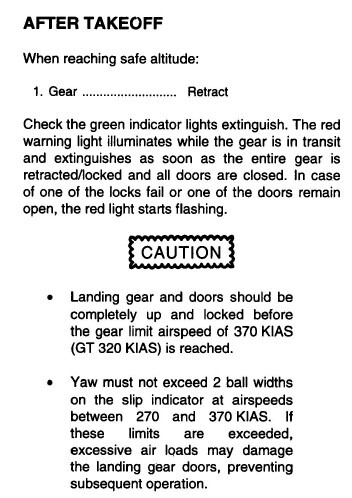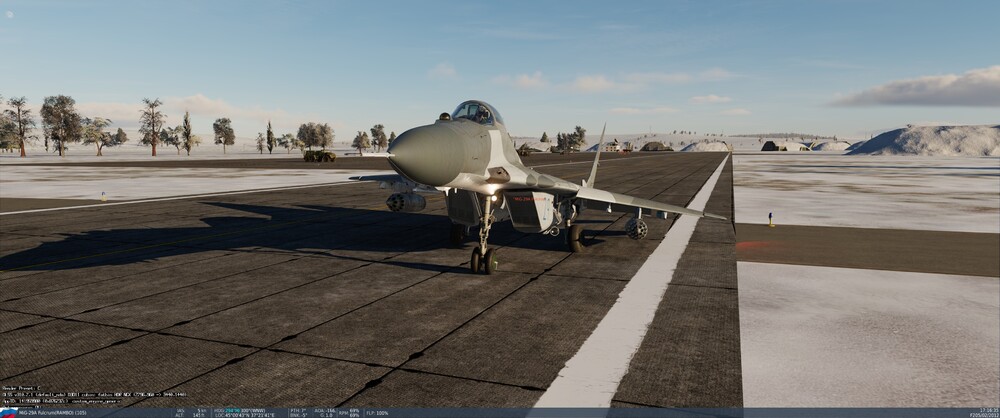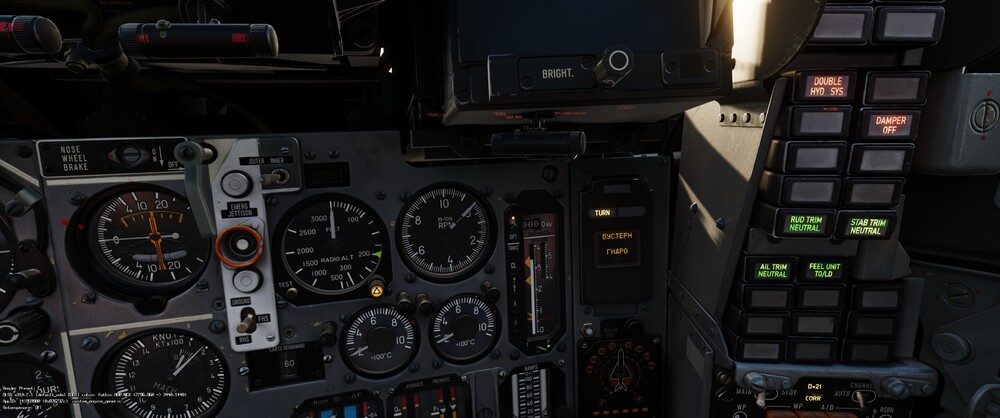-
Posts
62 -
Joined
-
Last visited
Content Type
Profiles
Forums
Events
Everything posted by CF104
-
Thank you very much for the quick tutorial. I'll work on getting these liveries working on my end. Cheers, John
-
Are you doing the G warm-up before doing these maneuvers? And the G warm-up benefits fade over time if you don't pull G's regularly after them. Regards, John
-
Just curious on how you got the livery made for the VSN F-104G to work with the F-104C? Cheers, John
-
Thanks for the great mod. I would like to know where I can post any observations regarding the F-104C mod? The RPM gauge is totally wrong in regards to the small dial operation. In sim it is rotating one full revolution for every 1% RPM. IRL, one full rotation of the small dial is equal to 10% RPM. Regards, John
-
Already been reported. Cheers, John
- 1 reply
-
- 2
-

-
I have not gone off-topic. You’re just determining that the information in the topic I linked is conflicting with your statements on the flap control panel and flap positions. There’s sufficient information here and in that topic that states both the DOWN buttons do the same thing. It’s either flaps UP or flaps DOWN. If you disagree with that, then we can agree to disagree and move on but don’t slag me off as going off-topic. Regards, John
-
Yes I did! Did you do the same for mine?
-
In real life, the Mig-29 only has 2 flap positions. Up and Down. See this other thread where it explains why the flap selector panel has an UP and 2 Down switches.
-
I've experienced the same in the Instant Action, cold and dark flight. Regards, John
-
I feel that what people are saying is that the aileron trim is too coarse. I have found that even with manually setting the aileron trim to the neutral position, I get a roll in either direction in flight. That in itself is okay but I can't adjust the aileron trim in flight to prevent any roll-off to either side. When I use the trim reset, the aileron trim is in perfect neutral with no roll-off. I feel that the aileron trim requires a bit more granularity to be able to properly trim wings level manually. Regards, John
-

DCS MiG-29A Flight performance and air drag seems weird
CF104 replied to HoMeBoY's topic in DCS: MiG-29A Fulcrum
No they don't. See the following for a description of the proper operation. -

AEKRAN display not in English with English option selected
CF104 replied to CF104's topic in Bugs and Problems
The fix has been posted by NineLine in this thread. Set the Avionics language to English. -

Air Speed Indicator / Machmeter in English cockpit
CF104 replied to Bremspropeller's topic in Bugs and Problems
Not a bug. It's part of the TAS Indicator. See Page 21 in the Flight Manual. It's in the Mods folder. x:\Eagle Dynamics\DCS World\Mods\aircraft\MiG-29-Fulcrum\Doc Regards, John -
ED seems to be stuck on tagging gear problems with "over-speeding gear" "not a bug". The real jet has a gear operation limit of 370 KIAS so i doubt that's the case. This is an indication of how robust this landing gear is IRL. Regards, John
-
Just to confirm I didn't overspeed the gear, I flew a test flight using the Mig-29G numbers. I retracted and extended the gear at several KIAS points up to and including 400 KIAS. The gear didn't fail at all which tells me the development team has the correct 370 KIAS gear operation speeds modelled. Track attached. Regardless of the above, the gear is too weak on the ground as currently modelled. And please remove the "overspeeding gear" tag as it doesn't reflect what I'm reporting. Regards, John Mig-29 gear speeds.trk
-
I did post that I had an excursion off the taxiway which caused the initial issue. Thus I replicated it on the tracks. The landing gear should be able to withstand unprepared surfaces. On track "Mig-29 gear damage", the left main gear already indicated unsafe after taxiing on the unprepared surface. I did not overspeed the landing gear on takeoff. The max indicated airspeed I reached was 290 KIAS with the gear retraction initiated well below 200 KIAS. The ED supplied flight manual has no reference to landing gear operation airspeeds. According to the German Air Force Mig-29G (Mig-29A to NATO standard) approved flight manual (GAF T.O. 1F-MIG29-1), the landing gear operation maximum speed is 370 KIAS. I didn't come near that speed. Regards, John
-
I see this has been marked as "correct as-is". I have attached 2 track files and will respectfully disagree with the assessment. In both tracks the gear didn't collapse but I was unable to retract them successfully. I also noticed that this has been tagged as "VVI to(sp) great". This was not due to high sink rate on landing but on taxi out from parking. The Mig-29A has very robust landing gear and should be able to take short excursions from paved surfaces without causing damage to the gear. Although this is a video of Mig-21's operating from a grass field, the principle is the same. Regards, John Mig-29 gear damage-2.trk Mig-29 gear damage.trk
-
Hello, Getting used to the paddle brakes and had a very slow excursion off the side of the taxiway during which the left main gear was damaged and partially collapsed with a flat tire. The Mig-29 was designed and built with unimproved strips in mind so a gear collapse with a slow excursion over flat frozen ground should not have happened. I didn't save a track but I'll test again and post it if I get the same results. Regards, John
-

AEKRAN display not in English with English option selected
CF104 replied to CF104's topic in Bugs and Problems
Hello, I did some searching around and came to the same conclusion. Avionics language is set to English and problem is resolved. Thanks, John -
Hi, After installing the Mig-29A, it's not logging any flight time in my log book. All flights have been single player. Checked the "logbook.lua" file and the Mig-29A isn't listed there. Any thoughts? Regards, John
-
This is the forum for the full fidelity Mig-29A just released and not for the FC version. The forum you need is below. MiG-29 for DCS World - ED Forums Regards, John
-

AEKRAN display not in English with English option selected
CF104 posted a topic in Bugs and Problems
Titles says it all. I have the English cockpit option selected but the AEKRAN display is in Cyrillic. The FAIL, TURN and MEMORY annunciators are in English. Regards, John -
Have any of the suggestions helped with your question? Want to make sure it's making sense. Cheers, John
-
Proper technique is to be trimmed for level on-speed AOA flight during the downwind. The OP should practice power manipulation from this starting point to see what it does in this stable trimmed condition. Once the OP is comfortable with this, then the transition to entering on-speed AOA from a non level attitude will be much easier. Cheers, John
-
Sounds like you need some instruction on aircraft dynamics during approach. When you are trimmed On-Speed (correct AOA) for approach in level flight, the following governs your success. 1. power controls rate of climb and descent 2. Pitch controls speed. 3. Use DLC (Direct Lift Control) to fine tune your touchdown point in-close. When properly flown, an approach uses power to control the rate of climb/descent. The aircraft will maintain the On-Speed AOA throughout as long as the power applications are smooth and you're NOT applying pitch inputs on the stick. Don't touch the trim at this point. If you are high, reduce power. If you are low, increase power. Also remember that if you need to increase or reduce power, do it in small amounts and be prepared to reverse the power inputs to prevent overshooting the desired result. The use of DLC will help in making pinpoint landings. It doesn't take long to get used to it and allows you to change your rate of climb/descent momentarily without changing the power settings. Set up a flight and just do some slow flying to work through these techniques. Assign DLC to buttons on your control stick or throttle, or just use the keyboard (much harder). Start by trying to fly level, trimmed On-Speed (correct AOA) for approach(AOA indexer O lit up) and DLC on. Turning on DLC will give you a mild pitch down that will require nose up trim. Now that you're stable, start reducing power in small amounts to increase rate-of-descent. Now apply some power to reduce the rate-of-descent. Once mastered you can pinpoint the rate-of-descent you desire and keep it steady there. Use DLC in small amounts to fine-tune your approach in-close. DLC switch forward increases descent and DLC switch aft decreases descent. I highly recommend you start out by reading Chuck's Guide on the Tomcat as it provides a lot of insight into flying and operating the jet. https://chucksguides.com/aircraft/dcs/f-14b Regards, John




